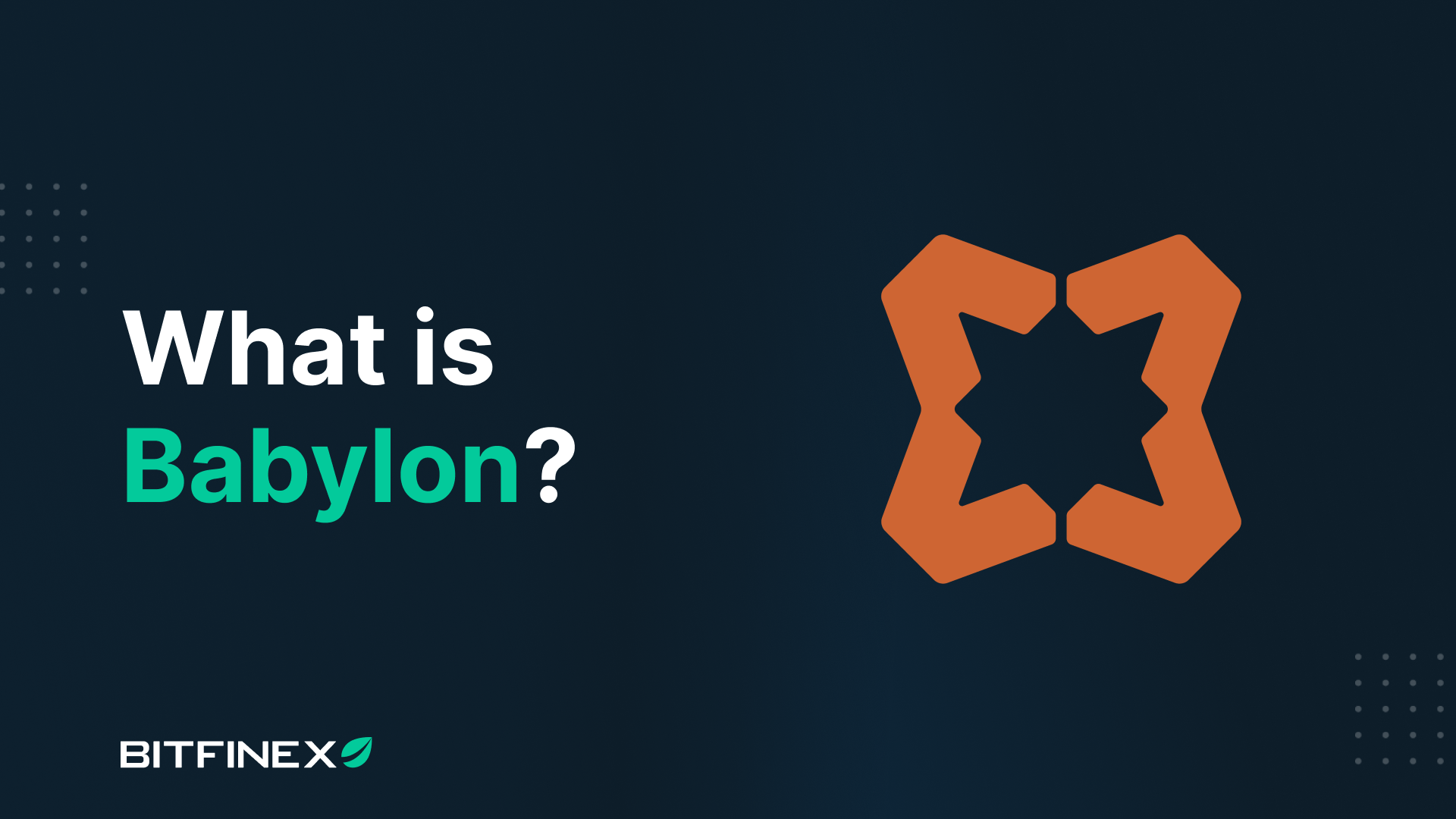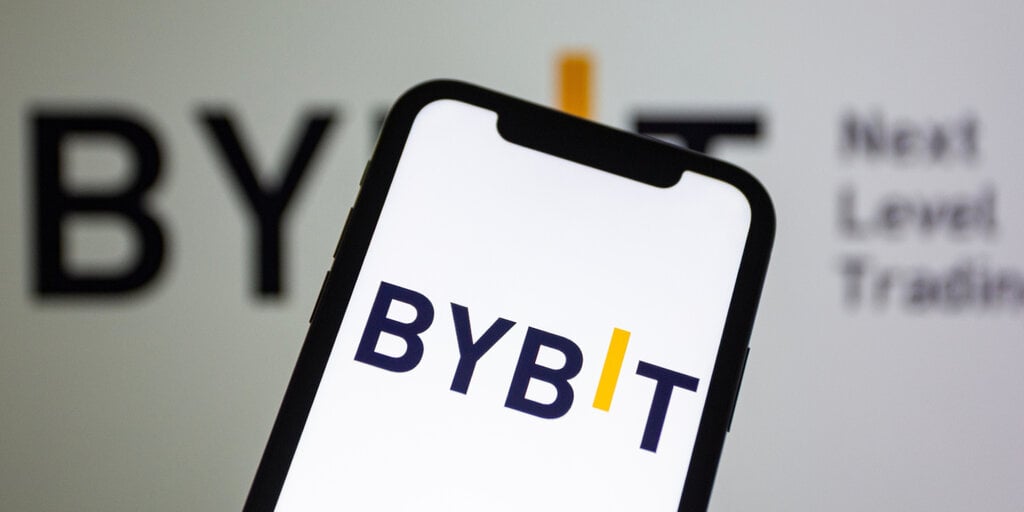
Bitcoin (BTC) has continued its ascent past $85,000, with the price up 1.10% and trading around $85,585. The flagship cryptocurrency’s price action has remained relatively muted this week as it recovers after a substantial drop on Sunday. Analysts believe if BTC can hold key support levels and maintain its position above $85,000, a move past $90,000 and a return to $100,000 could be on the cards. Bitcoin BTC) Bulls Attempting To Kickstart The Week Bitcoin bulls are trying their best to build momentum and push the flagship cryptocurrency towards $90,000. Michael Saylor’s Strategy took advantage of BTC’s recent dip towards $80,000 to purchase an additional 3,459 Bitcoin for $285.5 million, taking the firm’s total holdings to 531,644 BTC . However, some investors have scaled back on the asset and trimmed their holdings. According to CoinShares, digital asset exchange-traded products (ETPs) registered a staggering $975 million in outflows last week, taking the total outflows since February to $7.2 billion, reversing almost all year-to-date inflows, which now sit at just $165 million. While BTC may have found support, analysts remain divided about a significant rally starting until the uncertainty around tariffs is addressed. Trade negotiations between the US and other countries could also impact the BTC price. Strategy Purchases 3,459 BTC For $286 Million Michael Saylor’s Strategy has announced the purchase of 3,459 BTC for approximately $285.8 million in cash at an average price of $82,618 per Bitcoin . The purchase takes the company’s BTC holdings to 531,644 BTC . The company disclosed its latest acquisition in an 8-K filing with the Securities and Exchange Commission (SEC). Strategy’s BTC holdings are now worth a staggering $45 billion, bought at an average cost of $67,556 per Bitcoin for around $35.9 billion, including fees and expenses. Strategy made the latest acquisition from the proceeds of its Class A common stock, MSTR. Strategy announced the sale of 959,712 MSTR shares worth $285.7 million last week. As of April 13, the firm has $2.08 billion worth of MSTR shares for issuance and sale. Strategy also announced it sold zero perpetual strike preferred stock last week. Strategy has $20.97 billion worth of STRK shares available for issuance. The STRK and STRK stocks are in addition to Strategy’s initial 21/21 plan, which plans for a total capital raise of $42 billion in equity offerings and fixed-income securities for Bitcoin acquisition. Strategy’s last BTC shopping spree saw the company acquire 22,048 BTC for $1.9 billion in cash. However, the company paused Bitcoin acquisitions after reporting an unrealized loss of $5.91 billion in Q1 after spending around $7.6 billion to purchase $80,715 BTC during the quarter at an average price of $94,922. Q1 saw BTC’s worst quarterly performance since 2018, with the flagship asset falling almost 12%. Despite the decline, Strategy still trades at a premium to its Bitcoin net asset value. Some investors have flagged concerns about the company’s premium to NAV valuation and its increasingly numerous Bitcoin buying sprees. However, analysts at Berstein believe that with debt under 13% and no payments due until 2028, the firm’s leverage is manageable. The research and brokerage firm also predicted Strategy’s Bitcoin holdings could double to 1 million BTC by the end of 2033. US Has Many Ways To Bolster Bitcoin Reserve: Bo Hines The US is exploring several avenues to bolster its Bitcoin reserve without using taxpayer dollars, according to Bo Hines, the executive director of the Trump administration’s crypto council. According to Hines, the government is looking at tariff revenues and revaluing its gold certificates to fund BTC purchases. Hines stated, “We`re looking at many creative ways, whether it be from tariffs, there are literally countless ways in which you can do this. Everything is on the table, and like we`ve said, we want as much as we can get, so we’re going to make sure that no stone is unturned.” The Bitcoin reserve will initially consist of assets forfeited during civil and criminal disputes. However, the executive order allows the government to develop budget-neutral strategies to acquire additional Bitcoin. “It`ll provide clarity on many aspects of this space, whether it be from tokenization to staking, all sorts of things. We`re moving at tech speed, it’s like we’re a startup in this building. We`ll continue moving this along quite quickly.” Ray Dalio Issues Stark Warning Billionaire hedge fund manager and Bitcoin enthusiast Ray Dalio has warned something significantly worse than a recession could hit the US. The Bridgewater Associates founder believes Donald Trump’s aggressive tariff strategy could lead to a “breakdown of the monetary order.” Dalio stated that unless Trump’s economic policies are properly handled, there could be an international conflict that would be highly disruptive to the global economy. BTC has been highly sensitive to Trump’s plan to impose tariffs on imports, with China the focus of the President’s ire. BTC nudged past $85,000, reaching the crucial level even as digital asset investment products registered their third consecutive week of declines, with $795 million in outflows registered last week. Myriad Markets has predicted a 61% chance BTC will be trading above $85,000 by the end of Wednesday. Meanwhile, Bloomberg Intelligence’s senior commodity strategist Mike McGlone stated that BTC’s YTD losses were in stark contrast with Gold’s 25% rally. “Bitcoin and its millions of crypto dependents may require a rising U.S. stock market for buoyancy. The Bitcoin/gold ratio could be shifting to a more profound track—simple reversion.” Bitcoin (BTC) Price Analysis Bitcoin (BTC) climbed above $86,000 during the current session as it continues its recovery, reaching its highest level in nearly two weeks. The recovery began after President Trump softened his stance on tariffs. While BTC’s recovery is encouraging, it faces the risk of forming a death cross, a bearish technical pattern that occurs when the 50-day moving average dips below the 200-day moving average. The flagship cryptocurrency plunged over 6% on Sunday, dropping below $80,000 and settling at $78,301. Bearish sentiment and volatility persisted on Monday as the price fell to a low of $74,389 and rebounded to move past $80,000 before settling at $79,164, ultimately registering an increase of 1.10%. BTC lost momentum on Tuesday, dropping almost 4% to $76,283. Markets rallied on Wednesday after President Trump announced a 90-day pause on tariffs. As a result, BTC surged over 8% to reclaim $80,000 and settle at $82,593. BTC’s rally lost momentum on Thursday as the price fell 3.63%, slipping below $80,000 and settling at $79,592. Source: TradingView Sentiment changed on Friday as BTC rose almost 5% to reclaim $80,000, move past the 20-day SMA, and settle at $83,370. Buyers retained control on Saturday as the price registered an increase of 2.41% to move past the 50-day SMA and $85,000 and settle at $85,378. However, BTC lost momentum on Sunday, dropping almost 2% to slip below $85,000 and the 50-day SMA and settle at $83,776. BTC recovered on Monday, registering an increase of 1.01% and moving to $84,625. The current session sees BTC up almost 2%, with the price back above $85,000 and the 50-day SMA and trading at $86,086. Disclaimer: This article is provided for informational purposes only. It is not offered or intended to be used as legal, tax, investment, financial, or other advice
Bitzo
You can visit the page to read the article.
Source: Bitzo
Disclaimer: The opinion expressed here is not investment advice – it is provided for informational purposes only. It does not necessarily reflect the opinion of BitMaden. Every investment and all trading involves risk, so you should always perform your own research prior to making decisions. We do not recommend investing money you cannot afford to lose.
What is Babylon?

Babylon Genesis is a newly launched Bitcoin-secured Layer 1 blockchain that enables native BTC staking without relying on custodial bridges or wrapped assets. Built with the Cosmos SDK and CometBFT consensus engine, Genesis allows Bitcoin holders to participate in staking while maintaining full self-custody of their coins. Through a dual staking model involving BTC and the native BABY token, users can earn rewards by supporting network security and finality processes. With over 57,000 BTC already locked in the system, Babylon is establishing a foundation for Bitcoin-native DeFi, offering a trust-minimised platform where Bitcoin’s economic weight can be used to secure decentralised systems, validate transactions, and unlock new opportunities for on-chain utility. Babylon’s Genesis Layer 1 Bitcoin Secured Network (BSN) Babylon Genesis is a newly launched Layer 1 blockchain designed to bring native staking capabilities to Bitcoin without requiring custodial bridges or wrapped assets. Built using the Cosmos SDK and CometBFT consensus engine, Genesis operates as a Bitcoin-secured chain where holders of BTC can stake their coins directly while maintaining self-custody. Unlike traditional proof-of-stake models, Babylon enables stakers to participate without relinquishing control over their funds. The platform has already attracted over 57,000 BTC in total value locked, creating a foundation for Decentralised Finance (DeFi) applications that utilise Bitcoin as economic collateral while reinforcing the security of associated networks. Babylon’s staking mechanism allows BTC holders to secure other decentralised systems, such as PoS chains, rollups, or Layer 2s, by delegating their bitcoin to entities known as Finality Providers (validator nodes). These providers participate in consensus rounds that validate and finalise blocks across Bitcoin Secured Networks (BSNs). The protocol includes slashing mechanics to penalise malicious behaviour, echoing similar accountability systems in existing PoS architectures but without compromising on Bitcoin’s non-custodial principles. Stakers receive rewards for their contributions, with Genesis supporting a dual-staking model that includes both BTC and the native BABY token, which is also used for gas fees, governance, and validator incentives. Babylon’s Genesis chain also functions as a coordination layer between Bitcoin and other decentralised applications. By integrating timestamping, finality, and liquidity management, Genesis serves as a hub for interoperable infrastructure where BSNs can share protocol data and revenue. This role as a “control plane” makes it a central pillar in Babylon’s vision of a multi-chain, Bitcoin-secured internet of blockchains. Projects integrating with Genesis gain access to Bitcoin’s economic weight and decentralised assurances, unlocking new utility for dormant BTC in wallets and treasuries. Babylon is preparing to introduce a trust-minimised bridge between Bitcoin and Genesis based on advancements in BitVM2 , eliminating the need for trusted multisignature intermediaries. The project’s roadmap includes expanding support for restaking, vaults, and BTC-based liquid staking tokens (LSTs), aiming to make Genesis a liquidity centre for Bitcoin-native DeFi. By leveraging Bitcoin’s existing security properties in new ways, Babylon Genesis proposes a fundamentally different model for extending Bitcoin’s relevance in a world increasingly dominated by programmable, yield-generating assets, without altering Bitcoin’s base-layer design. How Does Staking Bitcoin On Babylon’s Genesis BSN Work? Staking Bitcoin on Babylon introduces a novel mechanism that enables BTC holders to participate in network security and earn rewards without relinquishing custody of their coins or wrapping them into synthetic assets. Instead of relying on bridges or custodians, users lock their bitcoin in self-custodial contracts using the Babylon protocol. These staked coins then serve as economic backing for Babylon’s own layer-1 chain, Genesis, as well as a broader network of BSNs, such as rollups, and proof-of-stake chains. This approach maintains the trust-minimised ethos of Bitcoin while allowing participants to generate yield from otherwise idle assets. Validation on Babylon is carried out through a dual staking model. The Genesis chain operates with two types of validators: those staking the native BABY token and “finality providers” who are backed by staked BTC. Finality providers participate in consensus rounds, based on the CometBFT consensus engine, where they help secure block production, confirm transactions, and provide finality to BSNs. These providers may also receive delegated BTC from users who prefer not to run their own infrastructure, further decentralising the network while offering stakers a share of the validation rewards. Slashing mechanisms are in place to ensure validator accountability, reducing the risk of misbehaviour or downtime. What makes Babylon’s model transformative is that it allows Bitcoin, the most secure and widely held digital asset, to serve as a foundation for securing proof-of-stake ecosystems. Bitcoin’s lack of native programmability has historically limited its use in decentralised applications, but Babylon overcomes this by building staking and finality layers around the asset itself, rather than within Bitcoin’s base protocol. This opens up access to BTC’s immense economic weight, currently over $1.6 trillion in market capitalisation, to help bootstrap the security and liquidity of emerging decentralised applications, without sacrificing the principles of self-custody or decentralisation. From a DeFi perspective, Babylon’s Bitcoin staking protocol has the potential to fundamentally reshape the sector. It offers a path to unlock vast amounts of dormant capital for decentralised lending, trading, governance, and infrastructure security, activities that were previously dominated by Ethereum and its tokens. By enabling Bitcoin to act as an active asset in DeFi systems, Babylon bridges a longstanding gap between Bitcoin’s store-of-value function and the dynamic, composable world of smart contract platforms. In doing so, it paves the way for a more inclusive and capital-efficient decentralised economy where Bitcoin is not merely stored, but actively used to support and secure the future of open finance. Will Hardcore Bitcoiners Adopt Babylon’s Hybrid BTC/Web3 Use Case? Traditionally, decentralised finance (DeFi) has been rooted in the domain of Web3, primarily flourishing on Ethereum and other EVM-compatible blockchains. These ecosystems offer smart contract functionality and composability, enabling applications for lending, borrowing, decentralised exchanges, and derivatives. Web3 DeFi has evolved with an emphasis on experimentation, token-based governance, and rapid iteration, with protocols like Uniswap , Aave , and Curve becoming foundational pillars. However, Bitcoin, the largest and most secure blockchain by market cap, has remained largely separate from these developments due to its intentionally limited scripting language and conservative approach to protocol upgrades. Babylon introduces a significant shift by enabling native Bitcoin staking and providing infrastructure for Bitcoin-based DeFi without requiring bridging, wrapping, or relinquishing custody of BTC. Through the Babylon Genesis chain and its network of Bitcoin Secured Networks (BSNs), BTC holders can now contribute to the security of decentralised systems and earn rewards while maintaining self-custody. This represents a novel model in which Bitcoin is used productively within a DeFi framework, preserving its monetary and security principles while unlocking yield-generating opportunities typically associated with Web3 environments. Yet the question remains whether Bitcoiners, particularly those who identify as Bitcoin maximalists, will adopt these new capabilities. Bitcoin’s cultural community has historically been sceptical of DeFi and Web3 innovations, often viewing them as overly complex, insecure, or motivated by short-term token speculation. This ideological divide has led to a persistent tribal rivalry between Bitcoin advocates, who prioritise simplicity, censorship resistance, and hard money, and Web3 users, who embrace programmability, token economies, and governance experimentation. The rise of Ordinals and Runes has revealed a clear appetite within a subset of the Bitcoin community for Web3-style applications, and their technically cumbersome implementation has spurred a wave of venture capital investment into Bitcoin layer 2s and sidechains aiming to deliver more scalable and flexible programmability. As a result, even innovations like Babylon, which are designed with Bitcoin-native principles in mind, may face hesitancy or resistance from parts of the Bitcoin community. Despite these philosophical differences, Babylon presents a middle ground that may help bridge the divide. By offering staking and DeFi functionality that aligns with Bitcoin’s emphasis on trust minimisation and sovereignty, Babylon could attract a subset of users who are open to using BTC productively, so long as it doesn’t compromise core values like self-custody or protocol integrity. Whether or not this is enough to foster mainstream adoption among Bitcoiners is still an open question. What is clear, however, is that Babylon introduces a compelling new chapter in Bitcoin’s evolution, one that challenges traditional assumptions about what Bitcoin can and cannot do within the broader decentralised economy. The post What is Babylon? appeared first on Bitfinex blog . Bitzo

Bitcoin Outshines Altcoins in Q1 2025 Market Slump, Coingecko Study Finds
The cryptocurrency market capitalization dropped 18.6% to $2.8 trillion in Q1 2025, with bitcoin consolidating its lead as altcoins stumbled, according to Coingecko’s quarterly report. Coingecko Data Shows Crypto Trading Activity Slowed Sharply in Q1 2025 The crypto market faltered in early 2025, shedding $633.5 billion amid muted trading activity, Coingecko researchers detailed in a Bitzo











